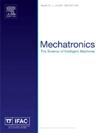基于机器学习的磁悬浮微型机器人三自由度控制自动化
IF 3.1
3区 计算机科学
Q2 AUTOMATION & CONTROL SYSTEMS
引用次数: 0
摘要
本研究提出了一种利用机器学习实现吸引型磁悬浮微型机器人三自由度控制的新方法。接触微操作方法面临与摩擦、间隙和维护要求相关的挑战;特别是在精细的应用,如细胞注射。吸引型磁悬浮的无摩擦和低维护特性使其成为传统方法的可行替代方案,但由于其磁场的复杂性,为此类系统实现精确的3-DoF控制并不简单。这项研究通过引入一种基于机器学习的方法来解决这个问题,该方法可以自动学习整个工作空间的悬浮动力学,有效地绕过了与吸引型磁悬浮的跨学科应用相关的主要挑战。我们提出的方法引入了一个自动化系统,以最少的人为干预生成训练数据,允许机器学习模型量化悬浮微型机器人对系统输入的物理响应,同时考虑整个工作空间中悬浮动力学的位置相关变化。然后利用该模型建立悬浮微型机器人的三自由度位置控制。除了简化新的和新修改的吸引力型悬浮平台的设置过程外,这种新的数据驱动方法被证明比传统方法提高了性能;在轨迹跟踪过程中,均方根误差减少20%,阶跃响应稳定时间减少36%。结果表明,我们的自动化方法能够显著减少与建立和修改吸引型磁悬浮平台相关的可达性障碍;有效地取代了通常的有限元模拟、精确磁场测量和/或分析计算方法,同时提供了比传统方法更好的悬浮控制。这一进展有助于微操作和微力传感领域,为实现吸引型磁悬浮系统的精确控制提供了更方便和有效的方法。本文章由计算机程序翻译,如有差异,请以英文原文为准。
Machine learning for automation of 3-DoF control of magnetically-levitated microrobots
This study presents a novel methodology for achieving three-degree-of-freedom (3-DoF) control for an attractive-type magnetically-levitated (maglev) microrobot using machine learning. Contact micromanipulation methods face challenges associated with friction, backlash, and maintenance requirements; particularly in delicate applications such as cell injection. The frictionless and low-maintenance nature of attractive-type maglev makes it a viable alternative to traditional methods, but achieving precise 3-DoF control for such systems is not straightforward due to the complexity of their magnetic fields. This research addresses this problem by introducing a machine learning-based methodology that automates the learning of levitation dynamics across the workspace, effectively bypassing a major challenge associated with cross-disciplinary applications of attractive-type maglev.
Our presented approach introduces an automated system for generating training data with minimal human intervention, allowing a machine learning model to quantify the levitated microrobot’s physical response to system inputs while accounting for position-dependent variations in levitation dynamics across the workspace. This model is then used to establish 3-DoF position control of the levitated microrobot. In addition to simplifying the setup process for new and newly-modified attractive-type levitation platforms, this new data-driven methodology is demonstrated to improve performance over conventional methods; achieving up to a 20% reduction in root mean square error during trajectory tracking and up to a 36% reduction in step response settling times.
The results demonstrate the ability of our automated methodology to significantly reduce the accessibility barriers associated with establishing and modifying attractive-type maglev platforms; effectively replacing the usual methods of finite element simulation, precise magnetic field measurements, and/or analytical calculations while providing enhanced levitation control over traditional methods. This advancement contributes to the field of micromanipulation and microforce sensing by offering a more accessible and efficient approach to achieving precise control in attractive-type maglev systems.
求助全文
通过发布文献求助,成功后即可免费获取论文全文。
去求助
来源期刊

Mechatronics
工程技术-工程:电子与电气
CiteScore
5.90
自引率
9.10%
发文量
0
审稿时长
109 days
期刊介绍:
Mechatronics is the synergistic combination of precision mechanical engineering, electronic control and systems thinking in the design of products and manufacturing processes. It relates to the design of systems, devices and products aimed at achieving an optimal balance between basic mechanical structure and its overall control. The purpose of this journal is to provide rapid publication of topical papers featuring practical developments in mechatronics. It will cover a wide range of application areas including consumer product design, instrumentation, manufacturing methods, computer integration and process and device control, and will attract a readership from across the industrial and academic research spectrum. Particular importance will be attached to aspects of innovation in mechatronics design philosophy which illustrate the benefits obtainable by an a priori integration of functionality with embedded microprocessor control. A major item will be the design of machines, devices and systems possessing a degree of computer based intelligence. The journal seeks to publish research progress in this field with an emphasis on the applied rather than the theoretical. It will also serve the dual role of bringing greater recognition to this important area of engineering.
 求助内容:
求助内容: 应助结果提醒方式:
应助结果提醒方式:


